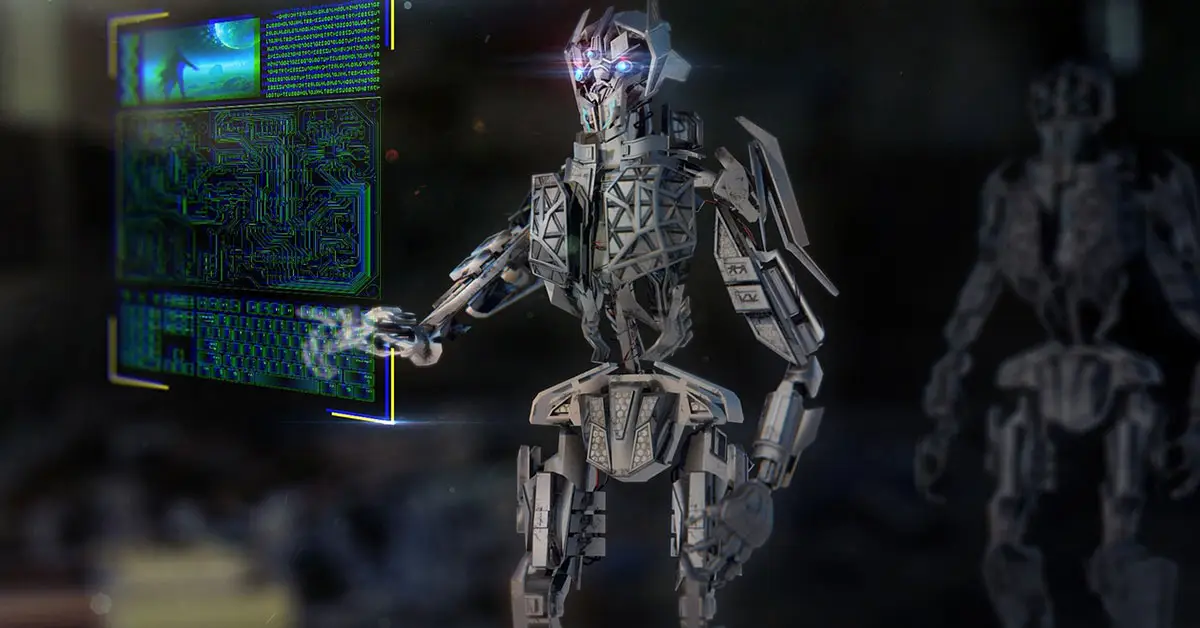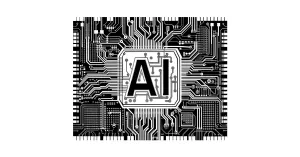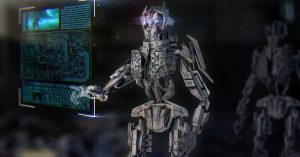AI as a concept isn’t new; it’s been plaguing the minds of mathematicians and scientists since the invention of the computer. To this day, AI elicits a huge range of opinions from people, from childlike curiosity to enduring admiration and even outright fear. But, if one thing’s for sure, it’s that AI’s influence on our everyday lives is only going to grow.
AI encompasses computer systems that can mimic human intelligence, learning from data to perform tasks without explicit programming and improving over time. Its applications are diverse, with problem-solving and decision-making capabilities that have to potential to save resources, money, and lives.
But, even with all its benefits, AI has some definite drawbacks. Concerns surrounding job displacement, biases, and ethical implications have sparked debate about responsible AI development. Let’s dive into the good, bad, and ugly of AI, so you can come to your own conclusions.
Applications for Artificial Intelligence
According to a survey by Hubspot, 62% of business leaders around the world have already invested in AI and automation tools for use in their companies. The beauty of AI is that its capabilities, like Natural Language Processing (NLP), facial recognition, deep learning, and recommender systems mean it has applications in almost every industry. Let’s take a look at how…
Healthcare - Deep learning algorithms can analyze medical images such as X-rays and MRIs. Alongside language processing that can extract insights from health records, AI can assist in efficiently diagnosing patients.
Education - AI can personalize educational materials for individual students based on their learning styles, aiding their education. NLP can also grade assignments and exams, saving teachers valuable time.
Agriculture - Computer vision can monitor images captured by drones and satellites, helping farmers determine the growth and health of their crops. If something isn’t quite right, machine learning (ML) can suggest optimization for irrigation, fertilization, and pest control.
Entertainment - AI algorithms have long been applied to websites and streaming services, suggesting recommended content based on viewer preferences. With deepfake technology, a controversial AI application, images of younger/deceased actors can be applied to current videos.
Manufacturing - ML can optimize and automate repair schedules on assembly equipment, reducing failures and downtime, while computer vision can identify defects in products, ensuring consistent quality.
Automotive - Similarly, ML can predict when a vehicle may break down by analyzing data from various sensors. But, perhaps one of the most exciting AI applications is driverless vehicles that use computer vision to respond to and navigate through an environment.
Finance - With AI’s ability to identify patterns and suspicious activity, financial fraud may eventually become a thing of the past. Pattern recognition can also aid in predicting market fluctuations and optimizing trading strategies.
Retail - Many companies are already making use of NLP-driven and generative chatbots to respond to customer queries and complaints, and direct them to the correct departments. When it comes to security, facial recognition can monitor customers in a physical store.
Though these are some current applications for AI, this is not an exhaustive list. With consistent investment and constant improvement, the technology will soon affect almost every industry.
Benefits of Artificial Intelligence
Of course, with so many applications, AI has several benefits. These include:
- Efficiency
AI automates repetitive tasks, not only hastening their completion but also freeing human employees up to complete more important work with improved productivity.
- Cost Savings
According to eMarketer, 50% of businesses using generative AI are already seeing cost efficiencies. By optimizing processes and improving efficiency, production, logistics, and customer service companies can benefit from reduced spending.
- Personalization
AI algorithms can personalize a site’s home page or product recommendations based on customers’ data. With 80% of consumers saying they are more likely to purchase from a business that offers personalized experiences, this is good news for both customers and companies.
- Decision-Making
With the help of AI, businesses can analyze their customer and client data, predict trends, and make informed decisions for their future. This gives businesses that integrate AI a distinct competitive edge.
- Improved Security
AI can analyze data to help cybersecurity professionals identify risks and build a robust ISMS. In fact, 4 in 5 telecom companies say they are already relying on AI to help identify and defend against cyber threats.
- Accessibility
AI can streamline accessibility testing, helping developers improve their products for all audiences. However, by learning speech patterns, AI can assist those with non-standard speech on an individual basis. On a similar note, with automated captioning, individuals who are hard of hearing can now take advantage of services that may have previously been inaccessible to them.
Pitfalls of Artificial Intelligence
However, despite its advantages, AI has several pitfalls. The most concerning of these are:
- Job Displacement
There is a worry that, since AI can automate many processes, the individuals who were responsible for these tasks may see their jobs taken over by AI. Sixty-nine percent of executives believe that AI will lead to new job roles, but this doesn’t change the fact that AI will likely displace, or completely change the nature of, current roles
- Compliance and Regulatory Challenges
Data fed to an AI, unless the AI has stringent data protection, can cause confidential information to be compromised. For example, Wiz Research discovered that Microsoft’s AI research team had accidentally released 38 terabytes of private data. Organizations employing AI on a similarly large scale face an increasing number of risks, with little recourse when things do go wrong. This is made worse by ‘black box’ AIs, which operate with almost no transparency in their algorithms.
3. Cost of Development
If a company did want to develop its own AI, the costs of research, coding, teaching, and implementation are far higher than almost any SME can afford. Rising Max estimated that costs for a small company can range from $20,000 to $ 45,000, while a medium enterprise may need to spend up to $1,000,000, and that’s with no guarantees for ROI.
- Ethical Questions
AI’s are built by humans, and human beings have biases. This means, depending on the data sets they’re trained on, AIs will reflect these biases back at us. For example, Joy Buolamwini, when studying facial recognition AI, found that the error rate for identifying white, male faces was 1%. However, when identifying black faces, Microsoft made errors 21% of the time, while IBM’s error rate was 35%. If industries are using this data to make business decisions, they run the very real risk that their decisions will be marred by these biases.
- Environmental Concerns
A pitfall of AI that’s rarely considered is its impact on the environment. While many experts recognize that AI can help us measure fluctuations in climate, lessen the damage we make to ecological systems, and combat climate change, others are inclined to disagree. Training a single AI can require massive amounts of computational power, emitting more than 626,000 pounds of carbon dioxide.
Looking to the Future
The development of AI isn’t set to slow down, with the AI market expected to be worth $2 trillion by 2030. Katie King, CEO of AI In Business called AI “an inevitable reality,” and the question is no longer whether it will be implemented, but how it will be implemented.
AI is a tool that could completely change the nature of healthcare, leading to breakthroughs in diagnostics and personalized medicine, go some way to alleviating environmental challenges through data-driven sustainability efforts, and enhance education by providing tailored learning experiences.
On the other hand, its ugliness is evident, as AI is a tool that can easily be used with ill intent. With the inherent risks of job displacement, biased algorithms that may perpetuate societal inequalities, and the ethical dilemmas surrounding autonomous systems, AI’s imperfect nature doesn’t mitigate the power it can provide its users.
In many ways, if AI is to be such a big part of our lives, we have a collective responsibility to guide its development and deployment and do our best to mitigate any potential ugliness. Unfortunately, the question of how we do that has no definitive answer. However, DeepMind’s Demis Hassabis has advocated for a move away from treating AI development as a business opportunity. Instead, he believes we should be treating it as a scientific endeavor.
“We believed AI would be one of the most important, if not the most important invention, humanity ever makes…In my view, I think we should be using the scientific method to [steward AI correctly], be thoughtful and hypothesis-generate, and try and get a better understanding of our things rather than the Silicon Valley trope of ‘Move fast and break things.’”
Either way, it’s clear that for AI to be successful and ultimately good, striking a balance between innovation and ethical considerations, fostering transparency, and implementing robust regulations will be pivotal.
In Conclusion…
AI is a revolution. Behind the automated task managers, personalized Netflix home pages, customer-care chatbots, and Chat-GPT-generated content lies a technology of immense promise and significant risk.
The applications of AI across various industries make clear its benefits for businesses, schools, farms, factories, banks, and more. AI can bring about unprecedented efficiency, personalization, and informed decision-making for all these institutions.
However, despite being a technological marvel, AI is not without its pitfalls. Job displacement, regulatory challenges, sky-high costs that limit development opportunities, ethical concerns, and a worrying environmental impact cast a dark shadow on our path to AI integration.
The bad and ugly sides of AI highlight the importance of navigating its integration with a kind of foresight that’s not always present in the industry. The future of AI is in our hands, and how we navigate that future will shape everyday life for generations to come.
Sources and Resources
- https://blog.hubspot.com/marketing/how-ai-will-change-businesses/
- https://www.simplilearn.com/tutorials/artificial-intelligence-tutorial/artificial-intelligence-applications
- https://www.forbes.com/sites/qai/2023/01/06/applications-of-artificial-intelligence/?sh=697377a83be4
- https://www.leewayhertz.com/ai-use-cases-and-applications/
- https://www.insiderintelligence.com/content/power-of-generative-ai-buyers-journey
- https://www.forbes.com/sites/blakemorgan/2019/05/21/50-retail-innovation-stats-power-customer-experience/?sh=64d3276c447e
- https://www.forbes.com/sites/louiscolumbus/2019/07/14/why-ai-is-the-future-of-cybersecurity/?sh=69f9d81e117e
- https://www.simplilearn.com/advantages-and-disadvantages-of-artificial-intelligence-article/
- https://www.forbes.com/advisor/in/business/software/advantages-of-ai/
- https://10xds.com/blog/benefits-of-artificial-intelligence-ai/
- https://aicontentfy.com/en/blog/impact-of-ai-on-content-accessibility-and-inclusivity/


















Add comment